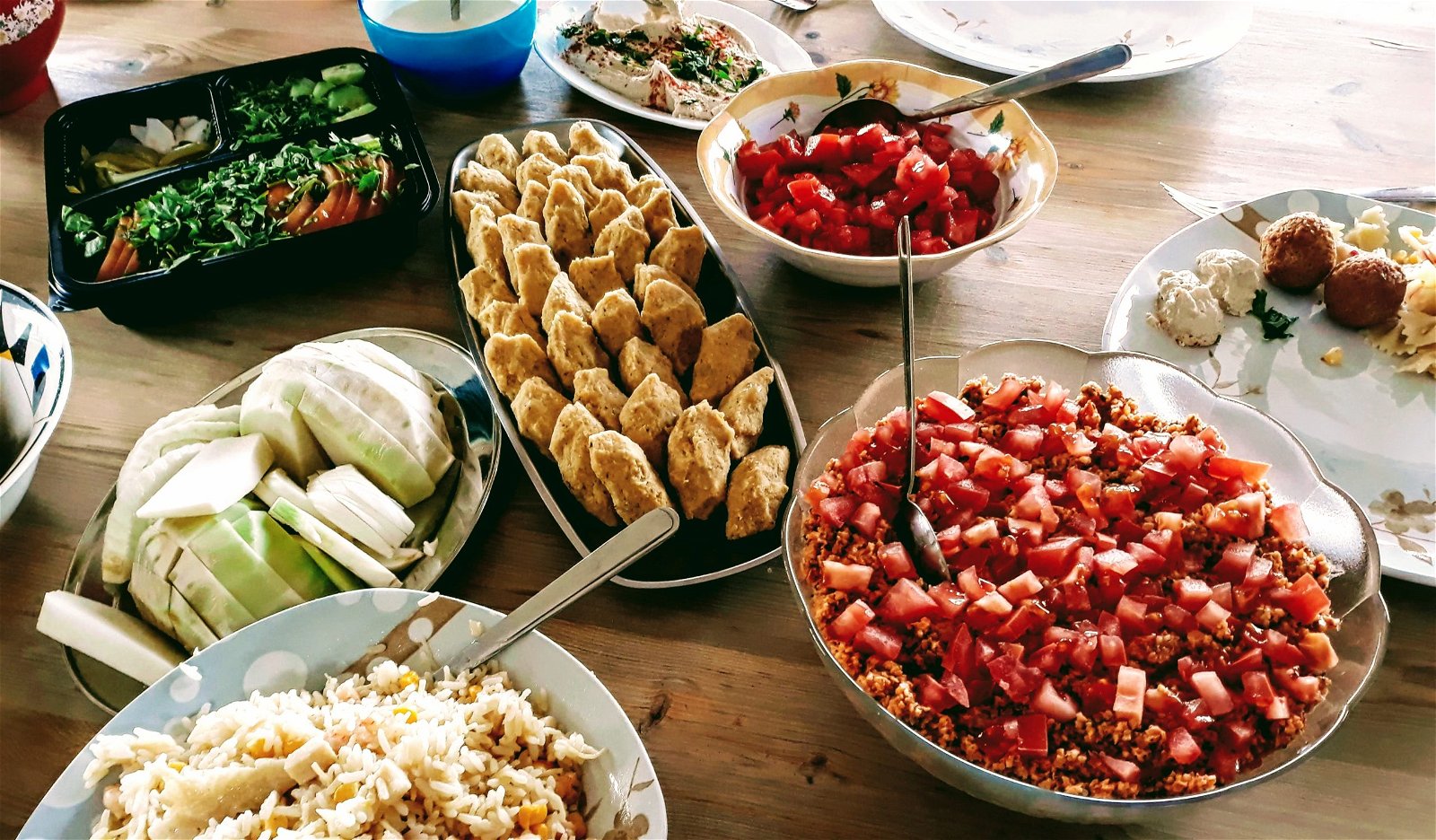
To the Armenian, the smell of traditional food cooking is what a serenade is to the ears of musicians. The history of our food is, in fact, the history of Armenian life at its most elemental, its most intimate, and its most essential. Every one of us has a core memory attached to our cuisine; helping our mothers delicately fold hundreds of pieces of mante, shadowing our fathers as they expertly flip skewers loaded with lule kebab, or passing our grandmother bunches of piquant herbs and sun-ripened tomatoes as they finely chop them to make tabbouleh—the virescent crown jewel of Mediterranean-Armenian mezze dishes. The flavors are those of rich memories and good conversations, all born on the dining room table. Whether or not these certain instances resonate, our dishes have always played a vital role in cultural preservation, a mainstay for Armenian expression.
These meals not only connect us to the past, but to both the present and the future.
Growing up, my mother always made it a point to incorporate Armenian cuisine into our day-to-day life, accompanying the dishes with spoonfuls of history. Slowly but surely, those home cooked meals would transport me and my sister to lands we’ve only seen in textbooks and family photo albums; a bustling Lebanon, a lush Syria and a Western Armenia right where it belongs. These meals not only connect us to the past, but to both the present and the future. My mother’s family currently lives in Lebanon, and I take some comfort in knowing that we are eating the same dishes on opposite sides of the globe. In a bittersweet way, it is beautiful.
Outside of my own family, food still remains an integral aspect of the Armenian world as a whole. First and foremost, let’s face it: we like to eat. Coupled with the fact that nothing brings people together like food, it makes sense that it holds such a weight on our culture. As customarily social and hospitable people, our cuisine has always been a cornerstone of our way of life, representing not only our personal lineages and ancestry, but also as a vital aspect of how we represent ourselves to the world. Whether it be inviting guests to drink countless coffee cups as a method to get them to stay and chat for just a little while longer, or sharing versions of the same recipe to distant family members, food will always remain the preeminent form of communication in Armenian culture.
As uniting as food is, it also possesses positive, divisive properties. One can instantly tell a specific region’s spin on a classic dish by merely glancing at the details. Where’s the parsley? Is it baked? Roasted? Do they add a dash of this? Or a dash of that? These seemingly trivial points of differentiation make all the difference. Conversations can be catalyzed off the simple comment on a unique cooking style; “Oh, this kebab tastes familiar. Your family doesn’t happen to be from Ourfa?” Right then and there, an evocative conversation that takes the participants from their living room back to their ancestral motherland has begun, over a simple question regarding the majesty of Armenian cuisine. Of course, we know your grandmother’s method of wrapping sarma is the best, but it is precisely this humorous idea of “my-grandmother-cooks-better-than-yours” that contributes to the grand quilted tapestry of the million items on the collaborative Armenian menu, written by all our grandmothers and enjoyed by all their grandchildren.
No matter where the Armenian, the food, though slightly altered, remains the same. The cuisine we eat is part of us as unavoidably we are part of them. Food feeds the soul, after all, and nothing quenches the Armenian soul better than the foods that are riddled in our genetic memory. Many cardinal details of cultures around the world have died due to their languages left unspoken, songs left unsung, and temples left unattended. While we must always battle to ensure that these aspects of our culture never share these fates in our modern world, it can be confidently said that there will never be a plate in an Armenian household left untouched.
“You learn a lot about someone when you share a meal together.”
—Anthony Bourdain



My mouth began to water after reading this article!!
Tzerkerout talar!
Thank you!
My body is starving for Armenian cuisine
I have to admit that the only time that I’ve tasted Armenian food was when I attended a conference in Chicago in 2014. For dinner one night, a bunch of us went to Sayat Nova, a local restaurant. Great stuff. If I ever go to the Windy City again – which might not be for a few years given the current state of things – I’ll definitely go to Sayat Nova again.
Thank you for reading! You definitely should.
Proud to be Armenian.
Absolutely! Thank you for reading.